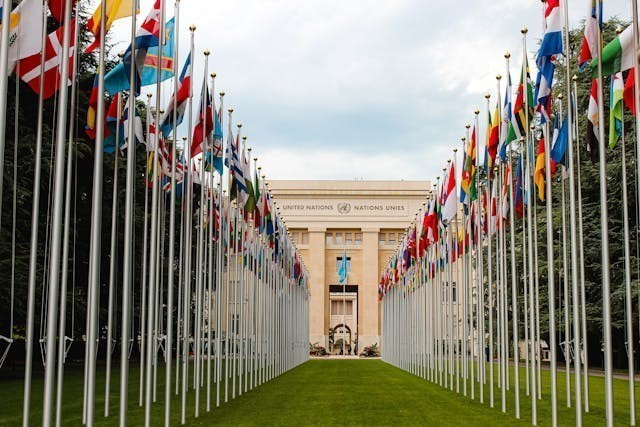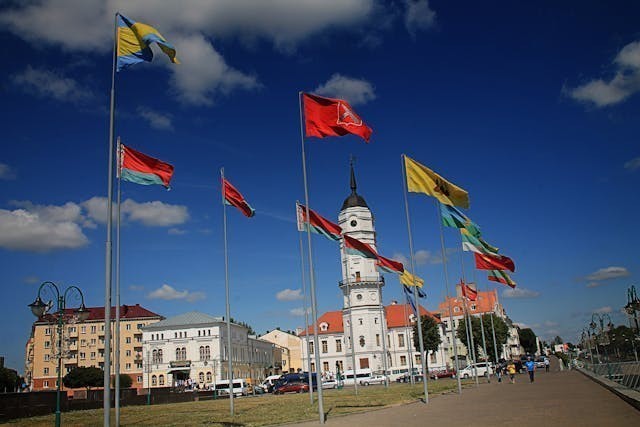Foreign Policy Analysis: Exploring Diplomatic Relations, Conflicts, and Alliances
Foreign policy is the strategy by which nations interact with each other to achieve their objectives on the global stage. It encompasses a broad range of activities, including diplomacy, conflict management, trade agreements, and strategic alliances. Understanding foreign policy is crucial for grasping how countries navigate international relations, address global challenges, and pursue their national interests. In this article, we'll explore key aspects of foreign policy analysis, including diplomatic relations, conflicts, and alliances, offering insights into the complexities of global interactions.


Diplomatic Relations: Building and Maintaining Connections
The Role of Diplomacy
Diplomacy is the cornerstone of foreign policy, involving negotiations and interactions between countries to address mutual interests and resolve disputes. Effective diplomacy can prevent conflicts, build partnerships, and foster cooperation. For instance, the Paris Agreement on climate change exemplifies successful diplomacy, where nations came together to tackle global warming through collective action.
Bilateral and Multilateral Relations
Diplomatic relations can be either bilateral (between two countries) or multilateral (involving multiple countries). Bilateral relations are often characterized by treaties and agreements that address specific issues, such as trade or security. Multilateral relations, on the other hand, involve broader cooperation through international organizations like the United Nations (UN) or the World Trade Organization (WTO). These interactions can address global challenges that require collective effort, such as pandemics or environmental issues.
Soft Power and Cultural Diplomacy
Beyond traditional diplomacy, countries also use soft power to influence and attract others through cultural, educational, and humanitarian initiatives. For example, the United States' Fulbright Program fosters international exchange and mutual understanding, while Japan’s cultural diplomacy through events like anime festivals and sushi diplomacy enhances its global influence. Soft power complements traditional diplomatic efforts by building positive perceptions and fostering goodwill.
Conflicts: Managing and Resolving Disputes
Types of International Conflicts
Conflicts between nations can vary widely, from territorial disputes to ideological clashes. Examples include:
-
Territorial Disputes: Conflicts over land boundaries, such as the ongoing dispute between India and Pakistan over Kashmir.
-
Ideological Conflicts: Clashes of political or economic systems, exemplified by the Cold War rivalry between the United States and the Soviet Union.
-
Resource Conflicts: Disputes over natural resources, such as water rights or oil reserves, can lead to tension, as seen in the South China Sea.
Conflict Resolution and Peacekeeping
Resolving international conflicts often involves negotiation, mediation, and, in some cases, peacekeeping missions. The United Nations plays a critical role in conflict resolution through its peacekeeping forces and diplomatic efforts. For example, the UN’s involvement in the Korean Peninsula has helped maintain a fragile peace since the Korean War. Additionally, regional organizations like the African Union (AU) and the European Union (EU) also engage in conflict management and resolution within their respective areas.
The Impact of Conflict on Global Stability
Conflicts can have far-reaching effects on global stability, impacting trade, security, and humanitarian conditions. The Syrian Civil War, for instance, has led to a massive refugee crisis and affected regional stability in the Middle East. Understanding the broader implications of conflicts is essential for developing strategies that address not only the immediate issues but also long-term consequences.
Alliances: Strategic Partnerships and Their Significance
Types of Alliances
Alliances are formal agreements between countries to support each other in various ways, including military, economic, or political cooperation. Key types of alliances include:
-
Military Alliances: Agreements for mutual defense and security, such as NATO (North Atlantic Treaty Organization), which aims to safeguard its members from external threats.
-
Economic Alliances: Partnerships focused on trade and economic cooperation, like the European Union (EU) and the United States-Mexico-Canada Agreement (USMCA).
-
Strategic Alliances: Collaborations based on shared strategic interests, such as the Quad (Quadrilateral Security Dialogue) involving the U.S., Japan, India, and Australia to address security concerns in the Indo-Pacific region.
The Role of Alliances in Global Politics
Alliances can enhance a country’s influence and security by pooling resources and coordinating actions. For example, the EU has created a single market that promotes economic integration and political stability among its member states. Similarly, military alliances like NATO provide collective security and deter potential aggressors.
Challenges and Evolving Dynamics
Alliances are not static and can face challenges such as shifting priorities, internal disagreements, or changing global dynamics. The recent strain in U.S.-European relations over defense spending and trade policies illustrates how alliances must adapt to evolving circumstances. Additionally, new alliances or realignments, such as the growing influence of China in global affairs, can reshape existing partnerships and necessitate adjustments in foreign policy strategies.
The Impact of Globalization on Foreign Policy
Interconnectedness and Global Challenges
Globalization has increased the interconnectedness of nations, making foreign policy decisions more complex. Issues like climate change, terrorism, and pandemics require international cooperation and collective action. The COVID-19 pandemic highlighted the need for global collaboration in public health and vaccine distribution, underscoring how interconnected the world has become.
The Role of Non-State Actors
Non-state actors, such as multinational corporations, non-governmental organizations (NGOs), and international advocacy groups, play a significant role in shaping foreign policy. Their influence can impact trade policies, humanitarian efforts, and international norms. For example, organizations like Amnesty International and Greenpeace have contributed to global discussions on human rights and environmental issues.
Technology and Cybersecurity
Technological advancements and cybersecurity threats have added new dimensions to foreign policy. Cyberattacks, information warfare, and digital diplomacy are now integral to international relations. Countries must navigate these challenges while leveraging technology for diplomatic engagement and strategic advantage.


Foreign policy is a dynamic and multifaceted field that encompasses diplomacy, conflict management, and strategic alliances. As nations navigate the complexities of global interactions, understanding these elements is crucial for grasping how international relations shape the world. While progress has been made in building inclusive and cooperative global systems, challenges persist, requiring ongoing adaptation and collaboration. By analyzing diplomatic relations, conflicts, and alliances, we gain insight into how countries pursue their interests, address global challenges, and contribute to the evolving landscape of international politics.












